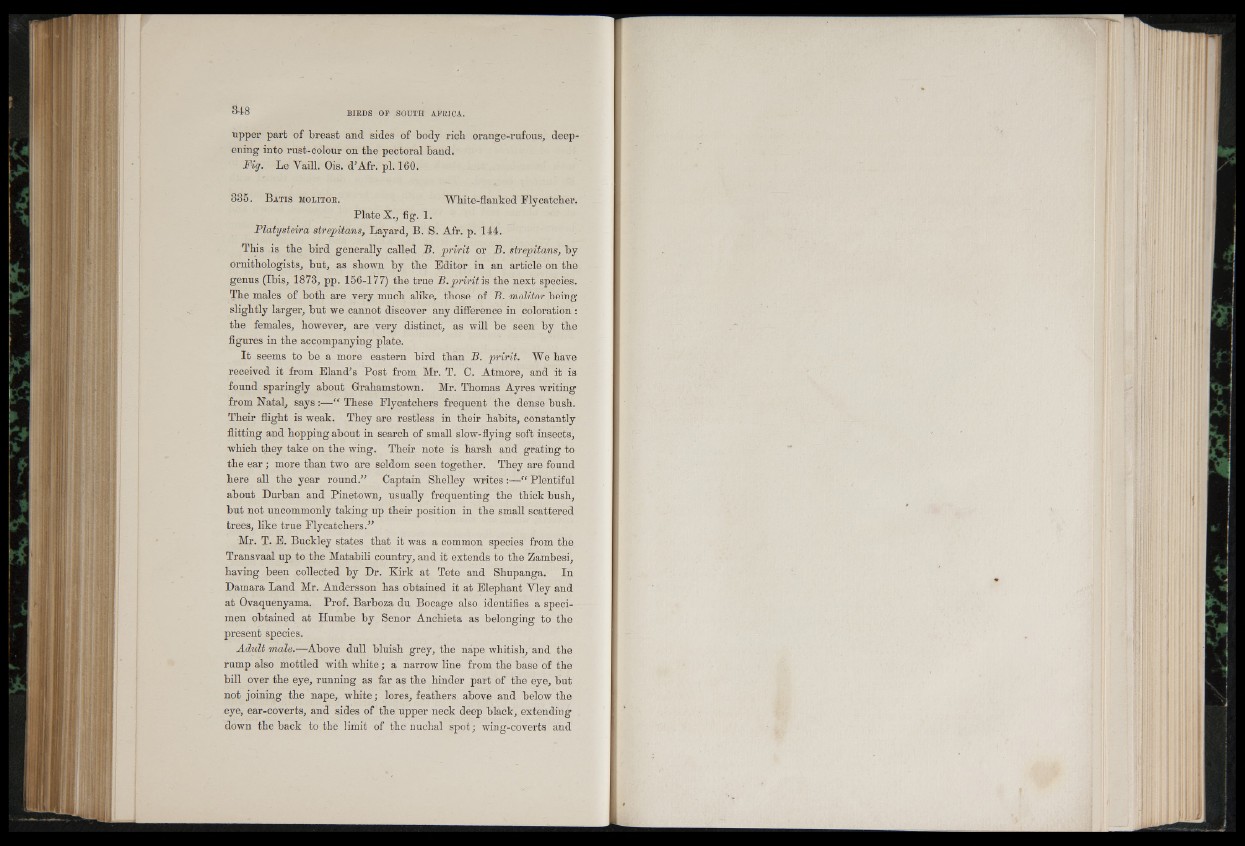
348 BIRDS OF SOUTH AFRICA.
upper part of breast and sides of body rich, orange-rufous, deepening
into rust-colour on the pectoral band.
Fig. Le Vaill. Ois. d’Afr. pi. 160.
335. B a t is m ol itor. White-flanked Flycatcher.
Plate X., fig. 1 .
Platysteira strepitans, Layard, B. S. Afr. p. 144.
This is the bird generally called S. pririt or B. strepitans, by
ornithologists, but, as shown by the Editor in an article on the
genus (Ibis, 1873, pp. 156-177) the true B. pririt is the next species.
The males of both are very much alike, those of B. molitor being
slightly larger, but we cannot discover any difference in coloration :
the females, however, are very distinct, as will be seen by the
figures in the accompanying plate.
I t seems to be a more eastern bird than B. pririt. We have
received it from Eland’s Post from Mr. T. C. Atmore, and it is
found sparingly about Grahamstown. Mr. Thomas Ayres writing
from Natal, says:—“ These Flycatchers frequent the dense bush.
Their flight is weak. They are restless in their habits, constantly
flitting and hopping about in search of small slow-flying soft insects,
which they take on the wing. Their note is harsh and grating to
the ear; more than two are seldom seen together. They are found
here all the year round.” Captain Shelley writes:—“ Plentiful
about Durban and Pinetown, usually frequenting the thick bush,
but not uncommonly taking up their position in the small scattered
trees, like true Flycatchers.”
Mr. T. E. Buckley states that it was a common species from the
Transvaal up to the Matabili country, and it extends to the Zambesi,
having been collected by Dr. Kirk at Tete and Shupanga. In
Damara Land Mr. Andersson has obtained it at Elephant Yley and
at Ovaquenyama. Prof. Barboza du Bocage also identifies a specimen
obtained at Humbe by Senor Anchieta as belonging to the
present species.
Adult male.—Above dull bluish grey, the nape whitish, and the
rump also mottled with white; a narrow line from the base of the
bill over the eye, running as far as the hinder part of the eye, but
not joining the nape, white; lores, feathers above and below the
eye, ear-coverts, and sides of the upper neck deep black, extending
down the back to the limit of the nuchal spot; wing-coverts and